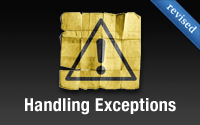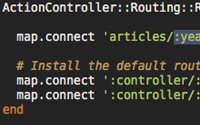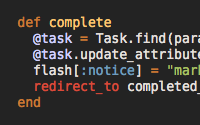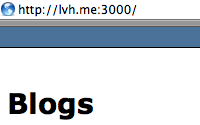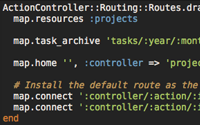Categories
- Active Record
- Active Resource
- Active Support
- Administration
- Ajax
- APIs
- Authentication
- Authorization
- Background Jobs
- Caching
- Code Walkthrough
- Controllers
- Debugging
- Deployment
- eCommerce
- Forms
- Mailing
- Models
- Performance
- Plugins
- Production
- Rack
- Rails 2.0
- Rails 2.1
- Rails 2.2
- Rails 2.3
- Rails 3.0
- Rails 3.1
- Rails 3.2
- Rails 4.0
- Refactoring
- Routing
- Search
- Security
- Testing
- Tools
- Views
Handling Exceptions (revised)
By default, Rails will render a static error file when an exception occurs in production. Here you will learn how to fully customize this behavior and render dynamic error pages.
(11 minutes)
Custom Routes
In this episode you will learn how to add custom routes, make some parameters optional, and add requirements for other parameters.
(7 minutes)
Custom REST Actions
REST adds many constraints. It restricts your controllers to seven actions. Normally this is okay, but sometimes you need to add your own custom actions. Learn how in this episode.
(8 minutes)
Subdomains in Rails 3
It is now possible to add subdomains to Rails 3 without the use of additional plugins. Learn how in this episode.
(13 minutes)
Named Routes
When you add a custom route, make it a named route so you have url helper methods to easily link to that new route. See episode for details.
(6 minutes)

